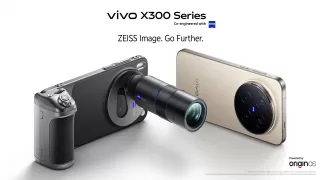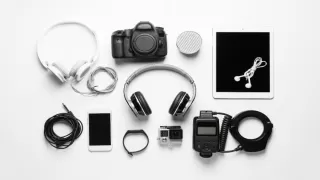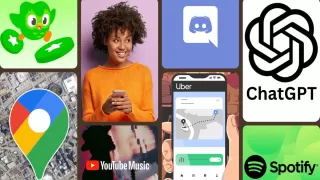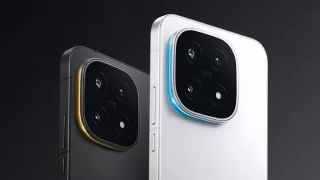In 2025, AI chatbots have become more than just digital assistants — they are intelligent collaborators capable of creative thinking, complex analysis, and emotional understanding. From helping businesses automate workflows to assisting individuals in learning, writing, and coding, chatbots like ChatGPT, Claude, Gemini, Perplexity, and Copilot are redefining how humans and machines interact. The latest generation of conversational AI tools blends natural language processing with deep reasoning, allowing users to engage in realistic, insightful discussions.
The competitive landscape that once saw a flurry of experimental chatbots has matured into a stable ecosystem of reliable, well-differentiated platforms. Some focus on creativity and versatility, while others prioritize accuracy, citations, or business integration. These tools have transformed industries by saving time, cutting costs, and enhancing productivity. Choosing the right one now depends less on hype and more on use case, reliability, and how naturally it fits into daily workflows.
This comparison explores the top five AI chatbots of 2025 — ranked from 5 to 1 — evaluating them across key parameters such as conversational depth, reliability, integration, pricing, and user experience. Each chatbot was tested using the same prompt to ensure fairness, offering a clear look at how each performs under identical conditions. The results reveal not just their strengths and weaknesses but also how these platforms are shaping the next generation of digital interaction.
How the Leading AI Chatbots Were Evaluated
All chatbots were tested using the open-ended query “How has rock-and-roll music changed in the last 40 years?” — a prompt chosen for its potential to elicit both factual and interpretive responses. This allowed an evaluation of how well each system blends knowledge retrieval, analytical reasoning, and cultural insight while maintaining coherence and tone.
The comparison examined factors like the depth and clarity of explanations, response accuracy, speed of generation, and interface design. Additionally, it assessed how each chatbot handled citations, usability, pricing tiers, and support resources. This balanced approach provided a comprehensive picture of performance across both casual and professional contexts.
To eliminate variability, each chatbot received the same phrasing of the query and was not prompted further during the session. This method allowed the evaluation to focus purely on natural output quality and the model’s intrinsic reasoning abilities without additional user steering or hints.
5. Microsoft Copilot
Microsoft Copilot offers a deeply integrated experience within the Microsoft ecosystem, making it one of the most business-oriented chatbots of 2025. It’s designed to streamline workflows across Word, Excel, PowerPoint, and Outlook by embedding conversational AI directly into the apps professionals use daily. Copilot starts every interaction by asking for your name, creating a personal connection that most other chatbots lack.
During testing, Copilot was the only chatbot that extended its musical analysis into the 2020s, addressing how streaming culture, indie production, and cross-genre collaborations have shaped modern rock. This showed that Copilot could interpret time-based trends effectively. However, it occasionally missed the finer details of distribution technology and record label dynamics, suggesting its strength lies more in summarization than in-depth analysis.
Copilot’s clean interface and easy navigation make it suitable for users of all technical levels. It integrates seamlessly with Microsoft 365 tools, enabling data retrieval and task automation without leaving the workspace. Its support system includes FAQs, guided articles, and community forums that foster collaboration. Overall, Copilot excels for professionals who value productivity and integration over creativity, offering a balance of conversational intelligence and business utility.
4. Google Gemini
Google Gemini Advanced, powered by the Gemini 1.5 Pro model, represents Google’s vision for multimodal AI. Unlike standard text-only chatbots, Gemini processes text, images, and code, and can even generate and analyze videos and audio. Its integration with Google Workspace tools makes it a central hub for research, creativity, and analysis for millions of users worldwide.
Gemini’s response to the test prompt was genre-driven rather than chronological. It explored the decline of classic rock, the rise of indie and alternative movements, and the explosion of cross-genre influences like electronic rock and K-pop. Its output was rich in detail and cultural insight, highlighting Gemini’s capability to interpret trends beyond Western music. Unlike most chatbots, it even acknowledged globalization and digital fan culture, which added realism and depth to its analysis.
Gemini’s interface is sleek and user-friendly, offering several “draft” options for every response, allowing users to compare variations. This is ideal for creators and researchers seeking multiple perspectives. The chatbot’s reminders to verify facts add a layer of transparency rarely seen in AI tools. However, users may notice variation between responses on repeated queries, reflecting the model’s adaptive nature. For those embedded in Google’s ecosystem, Gemini stands out as a versatile and powerful conversational partner.
3. Claude AI
Claude AI, created by Anthropic, places ethics and safety at the heart of its design. The three model tiers — Haiku, Sonnet, and Opus — provide flexibility based on speed and reasoning complexity. Claude’s mission is to offer a safe yet powerful AI capable of deep analysis without sacrificing control or clarity, making it a favorite in enterprise environments.
Claude’s response to the music query was structured chronologically, highlighting key artists and movements from each decade. It discussed punk and post-punk in the 1980s, grunge and alternative rock in the 1990s, and the fusion of genres in the digital era. While it lacked citations, the clarity and organization of its answers stood out. It was efficient, direct, and provided historical context without unnecessary digressions.
Claude’s interface is minimalistic but effective, focusing on readability and long-term usability. It keeps a detailed chat history, making it ideal for researchers or business users who revisit data. Support resources are clear and concise, complemented by an active Reddit community where users share insights. While not the most creative chatbot, Claude’s focus on precision, safety, and consistency makes it one of the most dependable choices for structured communication and corporate applications.
2. Perplexity AI
Perplexity AI blurs the line between a chatbot and a search engine, providing detailed, source-backed summaries of any topic. Instead of simply generating answers, it compiles verified data and lists its references. This makes it a trusted tool for researchers, journalists, and students who prioritize accuracy over creative elaboration.
In the music test, Perplexity offered a methodical, decade-by-decade analysis of how rock evolved — from the raw energy of 1980s punk to the digital experimentation of the 2000s. Its answers came with direct citations and links, ensuring every claim could be verified. This level of transparency is rare among chatbots, giving users confidence in the information provided.
Perplexity’s interface is intuitive and free of distractions, offering quick access to help, keyboard shortcuts, and FAQs. Its Pro tier unlocks advanced features like file analysis, image support, and adjustable AI models. The inclusion of source citations makes it especially valuable for academic writing, research, and professional content development. Overall, Perplexity represents the future of factual AI — a conversational engine that bridges knowledge and credibility seamlessly.
1. ChatGPT
At the top of the list is ChatGPT by OpenAI — the most well-rounded and widely recognized chatbot of 2025. With multiple subscription tiers including Free, Plus, Pro, Team, and Enterprise, ChatGPT scales effortlessly from individual users to large organizations. It supports code execution, creative writing, and complex reasoning, offering unmatched adaptability.
When tested, ChatGPT delivered the most comprehensive response to the rock music prompt. It explored not only genre evolution but also cultural trends, production innovations, and societal influences. Its coverage extended to changes in perception, fan engagement, and the nostalgia-driven revival of older rock styles. The level of contextual awareness and nuance in its responses sets it apart from every other chatbot on this list.
ChatGPT’s interface is elegant and distraction-free, focusing attention on the conversation itself. Its biggest limitation remains the absence of inline citations, though its reasoning and factual coherence compensate for this. For everyday use, ChatGPT excels across creative, technical, and educational tasks, remaining the benchmark for conversational AI in 2025. Whether for developers, businesses, or casual users, it offers an unmatched balance of intelligence, fluency, and versatility.
How to Choose the Right AI Chatbot
Choosing the best AI chatbot depends on your specific needs. For verifiable data and citations, Perplexity is the clear winner. For seamless integration with office tools, Microsoft Copilot stands out. If you value ethical design and structured communication, Claude AI is a great fit. Those in creative or technical fields will benefit from Gemini’s multimodal features and integration with Google apps, while ChatGPT remains the most versatile choice overall.
Before deciding, test each chatbot with the same prompts to evaluate accuracy, consistency, and tone. Observe how they handle rephrased questions and whether their responses align with your goals. Also consider factors like model transparency, user experience, and pricing tiers to ensure long-term value.
Ultimately, the best chatbot isn’t just the one that answers questions — it’s the one that understands your intent, adapts to your workflow, and continues to learn with you. In 2025, AI chatbots are not just tools; they’re partners in productivity, creativity, and discovery.
Also Read: India Welcomes Israel-Hamas Deal; Modi Praises Netanyahu




























